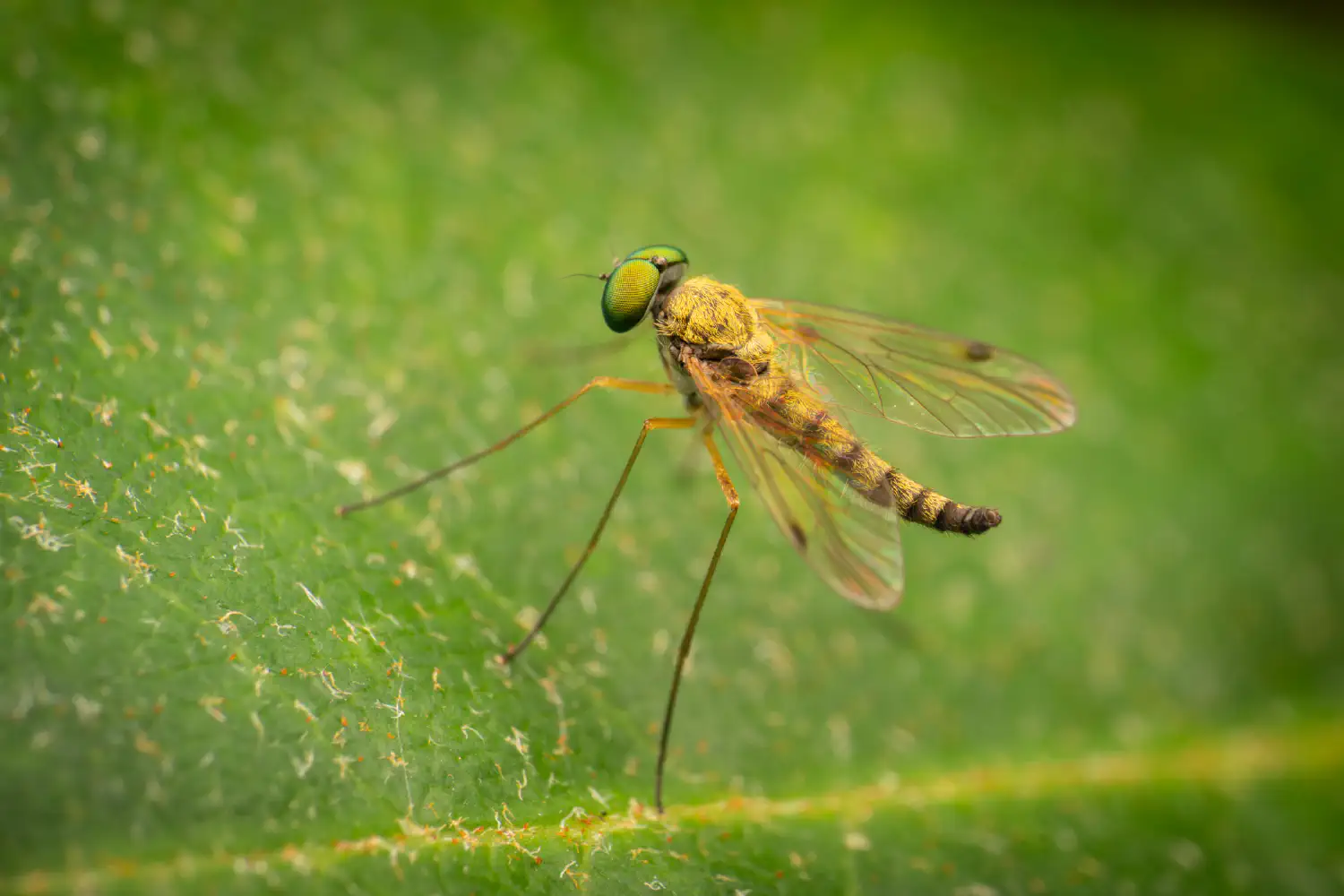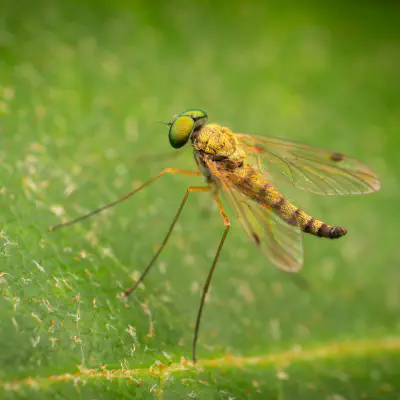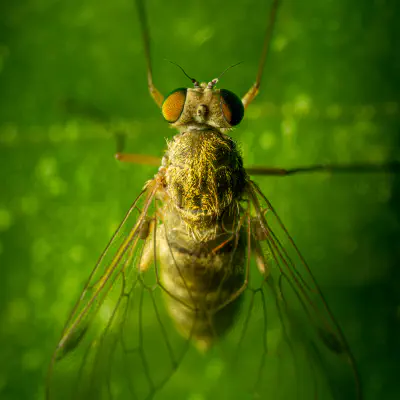Snipe Flies Lat. “Rhagionidae“
Rhagionidae or snipe flies are a small family of flies.
Hierarchy
Description
Rhagionidae are medium-sized to large flies with slender bodies and stilt-like legs. The mouthparts are adapted for piercing and many species are haematophagous as adults, while others are predatory on other insects. They are typically brown and yellow flies, and lack bristles. The larvae are also predatory and are mostly terrestrial, although some are aquatic. Snipe flies in the genus Rhagio are sometimes called “down-looker” flies after their habit of perching head-downward on tree trunks.
Classification
The family is contained in Brachycera infraorder Tabanomorpha, and several of its constituent groups have been recently elevated to family rank. Atherix (and related genera) now comprise the Athericidae, Vermileo (and related genera) now comprise the Vermileonidae, and the genera Austroleptis and Bolbomyia are each now the sole members of their own families (Austroleptidae and Bolbomyiidae).
List of subfamilies and genera
Arthrocerinae Williston, 1886
Arthroceras Williston, 1886 - Nearctic, Palearctic Chrysopilinae Bezzi, 1903
Chrysopilus Macquart, 1826 - Nearctic, Palearctic, Afrotropic, Neotropic, Oriental Schizella Bezzi, 1926 - Philippines Stylospania Frey, 1954 - Philippines Rhagioninae Latreille, 1802
Arthroteles Bezzi, 1926 - Afrotropic Atherimorpha White, 1914 - Australasia, Neotropic, Afrotropic Desmomyia Brunetti, 1912 - Palearctic, Oriental Rhagio Fabricius, 1775 - Nearctic, Palearctic Sierramyia Kerr, 2010 - Nearctic/Neotropic Spaniinae Frey, 1954
Litoleptis Chillcott, 1963 - Nearctic, Oriental, Neotropic Omphalophora Becker, 1900 - Palearctic, Nearctic †Palaeoarthroteles Kovalev & Mostovski, 1997 Ptiolina Staeger in Zetterstedt, 1842 - Nearctic, Palearctic Spania Meigen, 1830 - Nearctic, Palearctic Spaniopsis White, 1914 - Australasia Symphoromyia Frauenfeld, 1867 - Nearctic, Palearctic Incertae sedis
Alloleptis Nagatomi & Saigusa in Nagatomi, 1982 - Sulawesi
See also
Use of DNA in forensic entomology
Further reading
Bezzi, M. 1928. Diptera Brachycera and Athericera of the Fiji Islands based on material in the British Museum (Natural History). British Museum (Natural History), London. viii + 220 pp. Lindner, E 1924–1925. Rhagionidae in Die Fliegen der Paläarktischen Region 4 (20) 1–49. ISBN 3-510-43016-6 Keys to genera and species. Stuckenberg, B., 1960. Diptera (Brachycera): Rhagionidae. S.Afr. anim. Life 7: 216–308 Keys to genera and species. Stuckenberg, B., 1965. The Rhagionidae of Madagascar (Diptera). Ann.Natal Mus. 18:89–170. Keys to genera and species. Leonard, M. D., 1930. A revision of the Dipterous family Rhagionidae (Leptidae) in the United States and Canada, Memoirs of the American Entomological Society 7:1–181. Malloch, J. R., 1932. Rhagionidae, Therevidae. British Museum (Natural History). Dept. of Entomology [eds] Diptera of Patagonia and South Chile, based mainly on material in the British Museum (Natural History). Part V. Fascicle 3. - Rhagionidae (Leptidae), Therevidae, Scenopinidae, Mydaidae, Asilidae, Lonchopteridae. pp. 199–293. Nagatomi, A. & Soroida, K., 1985. The structure of the mouthparts of the orthorrhaphous Brachycera (Diptera) with special reference to blood-sucking. Beitr. Ent. 35 (2): 263–368, 480.
References
L. Watson and M. J. Dallwitz (2007-04-09). “Rhagionidae”. British Insects: the Families of Diptera. “Rhagionidae”. Fauna Europaea. Archived from the original on October 31, 2005. Retrieved 2007-07-02. “Nomina — Diptera: P–S”. Nearctica. 1998. Archived from the original on 2008-05-17. “A Check List of Japanese Insects”.
External links
“Brachycera”. Tree of Life Web Project. Rhagio mystaceus Rhagio diagnostic photographs Data related to Rhagionidae at Wikispecies
Ancestry Graph
Further Information
„Snipe Flies“ on wikipedia.org
„Snipe Flies“ on iNaturalist.org
Copyright

This article uses material from the Wikipedia article Rhagionidae the free encyclopedia Wikipedia which is released under Creative Commons Attribution-ShareAlike 4.0 International License). On Wikipedia a list of authors is available.

Little beings in print
Order our calendars and books today!
Compiled with love. Printed sustainably. Experience our little beings even more vividly in print. All our publications are available for a small donation.



